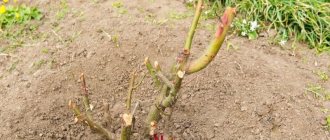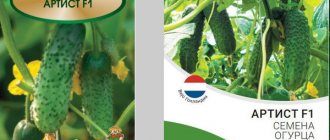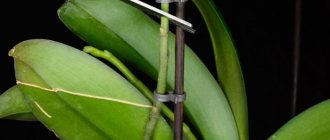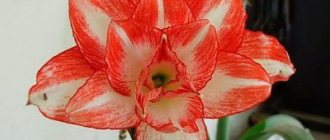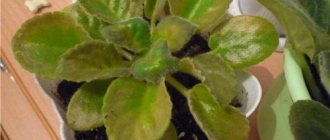Category: For flowers and indoor plants Reading time: 9 min · Views: 2,589
The most common type of violet is Saintpaulia - it can be found everywhere. Despite the species diversity of this ornamental plant, caring for Saintpaulias is the same. What is the best and most useful fertilizer for violets? Let's consider what and how to feed a houseplant in different seasons of the year.
Signs when a violet needs fertilization
It is quite logical that if a plant needs something, it lets you know about it in all available ways.
Synpolia signals the need for feeding with the following changes:
- growth arrest;
- weakened stems;
- unhealthy looking leaves;
- lack of flowers or poor flowering;
- improperly opened bud.
Let's celebrate! You should also know that if there is direct exposure to ultraviolet light on the violet, the vital activity of parasites on the plant, inconsistency in temperature conditions, if little time has passed since transplantation, the flowers are not fertilized.
Features of keeping violets
The violet flower prefers small pots; an adult does well in a container with a diameter of 13 cm. The substrate should be loose, saturated with air and retain moisture well. This is a mixture of peat, sand, humus, pine needles, and moss. The optimal temperature is 20-23°C. When watering, you should maintain a balance - do not overwater, but also do not let the soil dry out. For moistening, use warm, settled water. Moisture should not get on the sheet plates. It is better to water through a tray. In winter, flowers need additional lighting.
Beginning flower growers are always concerned with the question - how to feed violets? Lack of nutrients prevents flowering. No buds are formed among the numerous foliage. It is important to feed on time and not to overdo it. The flower does not like an abundance of microelements, especially in winter.
Types of fertilizers for violets
Various fertilizers are used to feed Saintpaulia. Once you delve into the structure and understand the rules of application and the needs of the flower, you can achieve abundant flowering for most of the year.
Feedings are:
Simple:
- nitrogen containing;
- phosphate, superphosphate;
- potassium salts.
Since they include one mineral in the structure, they can be added to the soil one at a time. Such fertilizers help to increase the pH level of the soil and make the flowering process more intense.
Complex fertilizers are balanced, saturated with all important mineral components, suitable for saturating the soil even under flowering Saintpaulias:
- Ethisso (nitrogen, phosphorus, potassium);
- Bona Forte (N, P, K);
- Master - universal feeding.
The drugs are produced in the form of powder, liquid, and can be universal or specialized.
Organic - important for saturating the soil before planting. Thanks to organic matter, the vegetative mass gains strength.
Top dressing
What microelements does violet need? The most important micronutrient for the development of all plants is nitrogen. This substance accelerates the development of leaves and stems and activates life processes in the plant. And for vigorous, long-lasting flowering, violets are recommended to use phosphorus and potassium.
In addition to mineral supplements, flower development requires:
- lighting at least 12 hours a day;
- correct and timely irrigation;
- sufficient air humidity in the room;
- correct soil mixture with the presence of humus, sand and moss.
To feed Saintpaulia, different types of fertilizers are used:
- organic;
- inorganic;
- mixed.
All types of fertilizers must contain phosphorus, potassium and nitrogen.
Nitrogen inorganic fertilizers include:
- ammophoska;
- nitrophoska;
- Ammonium nitrate.
This is the basic feeding necessary for any house flowers in the spring, when they gain green mass after winter rest. Also, the listed agrochemicals are needed when transplanting a flower into a new flowerpot and when propagating Saintpaulia with leaves.
Note! To establish flower stalks, mineral complexes with a high percentage of phosphorus are needed.
Fertilizer for violets for flowering is superphosphates, phosphates and potassium salts. These fertilizers can be added to the soil mixture all together or separately. It is most convenient to purchase complex agrochemicals so that the flower immediately receives everything it needs.
Organic fertilizers for violets are applied when planting a plant in a new flowerpot or when changing the soil mixture. Organic matter stimulates the vegetative development of the plant, strengthens the roots and stems.
Feeding calendar
At the moment of intensive growth, or before the release of buds, the plant needs feeding. Spring - summer is the best time to add nutrients to the soil for Saintpaulia.
At this stage, pay attention to signs that are a contraindication for feeding:
- the period of adaptation of violets after transplantation;
- dried soil;
- non-compliance with temperature conditions;
- the presence of insects on the plant;
- exposure to direct sunlight;
- rest phase.
When planting a flower, you need to take care of the correct composition of the soil and its saturation with nutrients, since the rooting period should pass without additional stress and fertilizers should not be applied to the flower for a month.
Spring is the time to build up vegetative mass before flowering. Saintpaulia is fed with fertilizers high in nitrogen. Important! Applications are made into moist soil to prevent burning of the root system.
Let's celebrate! When the flower produces buds, nitrogenous complementary foods are replaced with phosphorus and potassium supplements. It is recommended to fertilize Saintpaulia twice a week.
Feeding baby violets
Saintpaulia is bred by rooting leaves. The peculiarity of these flowers is that they do not need to saturate the soil with nutrients before rooting. The natural environment for violet growth is not fertile. Poor soils are optimal conditions for creating a good root system.
Good to know! After cropping, a month should pass from the mother bush before the first application of nitrogen fertilizing, and another couple before replacing nitrogen fertilizers with phosphorus ones.
Signs of improper feeding
If the rules for applying fertilizers are not followed, the following deviations in the development of the plant organism are observed:
- growth retardation - indicates a lack or excess of nutrition;
- chlorosis - characterized by changes in leaf pigmentation, can be caused by a lack of nitrogen or iron;
- increased growth of the above-ground part, dark green thickened leaf blades - excess nitrogen;
- lack of flowering, dropping buds - lack of phosphorus and potassium.
Mineral fertilizers
To create fertile soil, simple and complex mineral compositions are used. The forms for use are quite convenient; they can be tablets, sticks, or liquid.
If the drug is available in liquid form, you should read the instructions before use. Observing the dosage requirements, fertilizing is applied either under the root system or along the leaf.
Sticks and tablets are easy to apply. They are placed in the soil, where they decompose due to watering.
Specially developed, effective fertilizers for Saintpaulia, easy to use:
- Etisso;
- Good power;
- Master;
- BonaForte;
- Fusco;
- Peters.
How to water homemade violets to bloom profusely
How to feed rhododendron after flowering
How to feed violets for abundant flowering at home is of interest to both experienced gardeners and beginners. To maintain health and lush flowering, indoor flowers are suitable for different fertilizers. In addition to special purchased ones, you can use organic supplements and folk remedies. It is important that they are aimed at eliminating the delay in flower development.
Note! An excess of any fertilizer will not lead to good results. For Saintpaulia, a lack of microelements is less evil than their excess.
Proper care
Ready-made complex fertilizers
Complex fertilizers can be granular (superphosphate) and liquid. Liquid fertilizers are indicated with special inscriptions: “for violets” or “for Saintpaulias”. All proportions for use are indicated in the description. It is enough to follow the instructions.
For long, lush flowering, the following products are popular with gardeners:
- "Fertika";
- "Kemira";
- "Fasco";
- "Mr. Universal Color"
Their composition is balanced specifically for indoor Saintpaulias. The predominance of potassium and phosphorus ensures bright, long flowering.
Organics (manure, vermicompost, etc.)
Manure can be used as an organic fertilizer. Livestock waste is used highly diluted. First, prepare a concentrated solution, keep it warm for 3-5 days, dilute it in a ratio of 1:10 with water for irrigation.
Ready-made vermicompost is also available for sale. Fertilizers based on humic acids enhance the effect of minerals and improve the structure of the soil. It is recommended to adhere to the proportions specified in the instructions.
Folk remedies
Over many years of growing violets, flower growers have learned to prepare nutrient solutions from available materials. Use fruit waste, tea leaves, and coffee grounds. Sugar water performed well.
succinic acid
Pharmaceutical products, for example, succinic acid, are also not ignored. Powder diluted in water promotes better absorption of soil nutrients. In addition, succinic acid helps violets resist the influence of an aggressive environment. For feeding, 0.5 g per liter of water is enough.
Spilled tea
A useful fertilizer for violets is tea leaves. You can pour undrinked tea over the flower or use dry (sleeped) tea leaves. There are many beneficial elements in tea. Watering a couple of times a month will bring undoubted benefits.
The liquid phase of the tea leaves should be poured simply under the root of the flower, and the spent residue should be buried in the soil. So after each watering it will release useful substances.
Note! Sometimes it is recommended to pour tea leaves on top of the soil, but this often ends in the breeding of midges.
Coffee grounds
Coffee grounds also contain a lot of useful things. In addition, it increases the acidity of the soil and improves its structure. It is better to mix the grounds into the soil when replanting or drop them under the root of the flower.
Yeast solution
Yeast contains a large number of beneficial bacteria, which affect the activation of growth and flowering of the crop.
Solution composition:
- dry yeast – 5 g;
- water – 0.5 l;
- ascorbic acid – 1 g;
- sugar – 15 g.
The yeast solution is used only once a month and then only in the summer.
Attention ! The yeast solution leads to leaching of calcium and potassium. Therefore, their quantity should be replenished.
Glucose
A powerful source of energy is glucose. It can be used as a top dressing all year round. It is especially important to support plants with winter light. Still, there is no need to overdo it. It is enough to feed the bushes once a month. The solution is prepared from 0.5 liters of water and 1 tbsp. spoons of sugar.
The need for glucose can be understood if:
- leaves lose color;
- no flowering;
- the bush is not growing.
Interesting ! Young Saintpaulias especially need sugar.
Vitamins and iodine
Iodine is rarely found in fertilizers. Moreover, it is extremely important for violets. Use of this microelement:
- accelerates metabolic processes;
- stimulates the growth of green mass;
- provides abundant flowering;
- gives brightness to the color of the buds.
In the natural environment, plants receive iodine from the air, but there is none in the home air. Therefore it must be entered separately. A solution is prepared from 1 drop of iodine and three liters of soft water. It is enough for them to fertilize the flower twice a year (in spring and summer).
Iodine as a supplement
Eggshell Calcium Powder
The lack of calcium can be compensated by using eggshells. It can be used in different ways:
- infuse water for irrigation;
- put in a flower pot instead of drainage;
- mix shell powder into the planting soil.
To avoid contamination of the soil, the shells must be washed and dried thoroughly before use.
Banana peel
Banana peels are rich in potassium and manganese. An infusion of the peel is used for feeding. Preparing the solution is simple - pour any number of skins with any volume of water. You just need to keep it warm for 2-3 days. Then it can be used for feeding, but on soil watered with clean water. Frequency of use: once a month.
Onion dressing
Onion peel infusion is also rich in nutrients. It is not difficult to prepare - pour hot water over the husks, cool, and water the flower. Can be used monthly.
Citrus peels
There are many different vitamins in citrus peels. They can be usefully used to feed home flowers. The peel of the fruit is poured with boiling water, left for a day, and diluted with clean water in a ratio of 1:10. The solution is ready. You can water every 2-3 weeks.
Infusion of citrus peels
Garlic infusion
Garlic infusion is more beneficial at a water temperature of +34-36 degrees. For one liter of warm water, 1 crushed clove of garlic is enough. The infusion is kept for 2-3 hours, filtered and heated to the original temperature. The flower can be watered with the solution 1-2 times a month.
Ash
Ash contains an impressive amount of phosphorus and potassium. In addition to them, ash is rich in magnesium, boron, sulfur, and calcium. All this is very useful for violet. The solution is prepared from 1 tbsp. l ash and 1 liter of water. Can be used after three hours of infusion. It is acceptable to use every 10 days.
Ash infusion
Potassium permangantsovka
The main components of potassium permanganate are potassium and manganese. Both elements are vital for the violet. It is very useful to water the flower with a faint pink solution of manganese every 2 weeks.
Folk remedies
Amateur flower growers do not always use store-bought preparations. Handy folk methods of soil enrichment can give excellent results:
Vitamin B12
Has a positive effect on the resistance of Saintpaulia to diseases. The ampoule is diluted in water (1:10) and applied to the soil twice a season.
Yeast
Promotes intensive growth of flowers. To strengthen the condition of the flower, they are often used. To do this, yeast is combined with sugar and dissolved in heated water. After soaking for three hours, after which you can enrich the soil. In summer - once a decade, in winter - once a month.
Iodine
A valuable mineral that actively participates in the growing season and flowering. During the warm season, it is recommended to saturate the soil with it. Tincture of iodine (1 drop) is mixed with water (3 l). Irrigation is carried out three times during the season.
Coffee grounds
Its remains after drinking coffee loosen the ground well. The grounds are mixed with soil, added to the plant, after which the Saintpaulia is not irrigated for several weeks. The property of the ingredient to increase Ph is also noted.
Onion
Onions help fight diseases and parasites. Thanks to beneficial inclusions, onions make the leaves juicy, thick, and flowering abundantly. To do this, boil the husks covered for half an hour. The solution is kept for 8 hours. Used for spraying and foliar feeding. Prepare before use.
Sugar
Used to stimulate growth. Glucose is diluted in water and used for spraying. This way they fertilize once a month.
Black tea
And to be more specific, the spent tea leaves simply crumble along the soil of the pots. Also used brewed for watering. Tea contains many useful substances and is a good alternative to other fertilizers.
Citrus
Or rather, their skin can strengthen the plant’s immune system, ward off pests, and prevent the development of diseases. The peel is combined with boiled water, left for a day, diluted with water (1: 10). Fertilizer is applied under the root system.
Non-concentrated fertilizers are always better
The correct choice of fertilizer concentration is a key factor in the care of any Saintpaulia. The slightest excess of permissible dosages and contact of roots with concentrated preparations cause burns and serious damage to the roots. It is better to feed Saintpaulias with non-concentrated fertilizers than to take risks with increasing the dosage.
The standard for any Saintpaulia is the dosage of complex mineral fertilizers specifically designed for the plant, containing both macro- and microelements:
- 1 g of fertilizer diluted in 1 liter of high-quality water for irrigation with a frequency of 15 to 20 days (or the full dose specified by the manufacturer);
- 1 g per 2 liters of water for feeding with a frequency of 7-10 days (or half the recommended portion);
- 1 g per 3 liters of water for fertilizing with a frequency of 5-6 days (or three times the recommended rate);
- 1 g per 6-8 liters with constant application of fertilizers along with watering (the dosage is reduced by 5-8 times).
For organic fertilizers, the dosage should be determined by the type of fertilizer and its characteristics. Purchased preparations, especially special fertilizers for Saintpaulia, are used in accordance with the manufacturer’s recommendations.
Microbiological preparations are diluted in a concentration of 50 ml per 10 liters of water. Dry humus is used as mulch on the soil, evenly scattering about 2 tablespoons per plant on the surface, followed by abundant watering.
Mullein, manure, and bird droppings are first diluted to a concentrate (200 g of dry manure or 50 g of bird droppings per 10 liters of water with the addition of 1 g of copper sulfate), the fertilizers are kept for 1 month and then 100 g are used per 3 liters of water.
The frequency of feeding Saintpaulia is affected by both lighting and air temperature. © Merike Linnamägi
Fertilizer application methods
In order for Saintpaulias to grow intensively and enjoy abundant flowering, nutritional components are added using special technologies.
Fertilizer for all varieties of violets is applied using the same method; the only difference is possible when feeding ampelous Saintpaulias, taking into account their placement: in a pot on the wall or on the windowsill.
Good to know! Plants are fed with root and foliar technology. However, the requirements for the process differ.
Root feeding
Root feeding is carried out only using filtered, heated water and observing the dosage when diluting the drug. To prevent fertilizers from getting on leaves and flower buds, preference is given to liquid forms of preparations. The application of concentrates to mini-violet bushes is reduced by 2 times and fertilizing is carried out once a month.
Foliar feeding
Foliar feeding - delivers nutritional components to the plant faster. This type is useful, as fertilizers are quickly absorbed.
To get a good result, it is important to know the basic rules for applying fertilizer:
- Do not allow droplets to accumulate on the leaves, so as not to provoke the formation of burns from exposure to sunlight or areas with putrefactive processes;
- before starting the procedure, the leaves should be washed to remove dust;
- It is better to choose the time for applying fertilizers in the evening, the weather is cloudy;
- the concentration for irrigating leaves should be halved;
- Spraying of fertilizer is carried out on the back side of the leaves, since from below the leaves have more intense absorption.
Let's celebrate! Wick feeding. The pots are placed on a pallet on which fertilizers are located. When growing on shelves, this method is convenient and in demand.
How to apply fertilizers
There are two generally accepted methods of applying fertilizer: root and foliar. It is believed that the use of root feeding is more effective. In this case, the root system receives the maximum amount of useful microelements.
Root feeding
The solution should be prepared using warm water. Cold water is harmful to violets. When root feeding using purchased fertilizers, the concentration of the solution should be reduced. The main thing is to prevent the drug from getting on the leaves and flowers.
Applying fertilizer at the root
Foliar feeding
This procedure is carried out only with special means. It is necessary to use sprayers capable of spraying using the “fog method”.
When performing the process of sprinkling violets, maximum care is required.
Spraying procedure
Attention! Overmoistening of the sheet plate is not allowed.
Spraying can be carried out only on healthy and undamaged plants and only in the evening. The concentration of the drug should be halved compared to root watering. This method of feeding cannot be used more than 4 times during the entire spring-summer season.
Wick feeding
The technique of feeding using the wick method is simple. Through the wick, the violet will take only the required amount of nutrients. The container with micronutrients is located under the violet pot, and the string will be a source of liquid delivery to the roots.
Wick irrigation with fertilizers
The use of wick feeding is allowed throughout the entire period of Saintpaulia development.
Features of caring for violets
There are about 300 species of violets. When it comes to varieties, they number in the thousands. The most popular varieties: terry, alpine, trailer, variegated, ampelous, royal.
Despite the fact that the flowers have an incredible, abundant bloom and luxurious appearance, caring for them is not difficult. By following the basic rules of care, you can achieve continuous flowering.
Lighting
Saintpaulias are light-loving and need it up to 14 hours a day. Typically, in spring and summer, plants have enough natural light; with the onset of autumn, additional lamps must be used.
Watering and humidity
Violets need systematic watering, but it is important not to overwater the plant. The pots must have holes in the bottom, and the bottom is also lined with stones and expanded clay.
If the flower is grown in a container, it is necessary to maintain the humidity requirements in the room. The optimal amount of moisture is 50%. Violation of the condition in any direction is detrimental to the plant.
The air temperature varies between 19 and 25 degrees. Dry air is unacceptable when growing violets.
Soil and fertilizing
For planting flowers, you can use ready-made substrates, which are sold in flower shops. The composition is completed with humus, moss, sand, in compliance with the correct proportions.
For feeding, it is worth acquiring nitrogen, potassium and phosphate fertilizers. All fertilizers are applied at the right time, when their effect is of particular importance for violets.
Do violets need to be fed?
Violets are not too demanding when it comes to feeding. There is an opinion that they need not be fertilized at all. But experts say that without proper, balanced and timely fertilizing, it will not be possible to grow healthy plants with lush and bright flowers.
It is difficult to grow a quality plant without the use of fertilizers
Fertilizer application timing
They begin to feed violets a month after transplantation. During the active period (with the onset of spring and until late autumn), fertilizing is applied at intervals of 2-3 weeks, and during the dormant period (winter), one fertilizing per month is sufficient.



